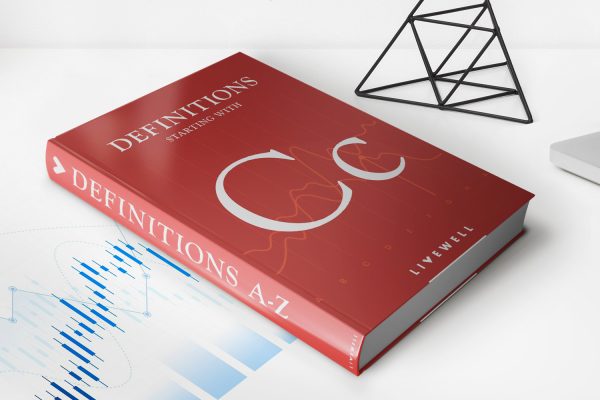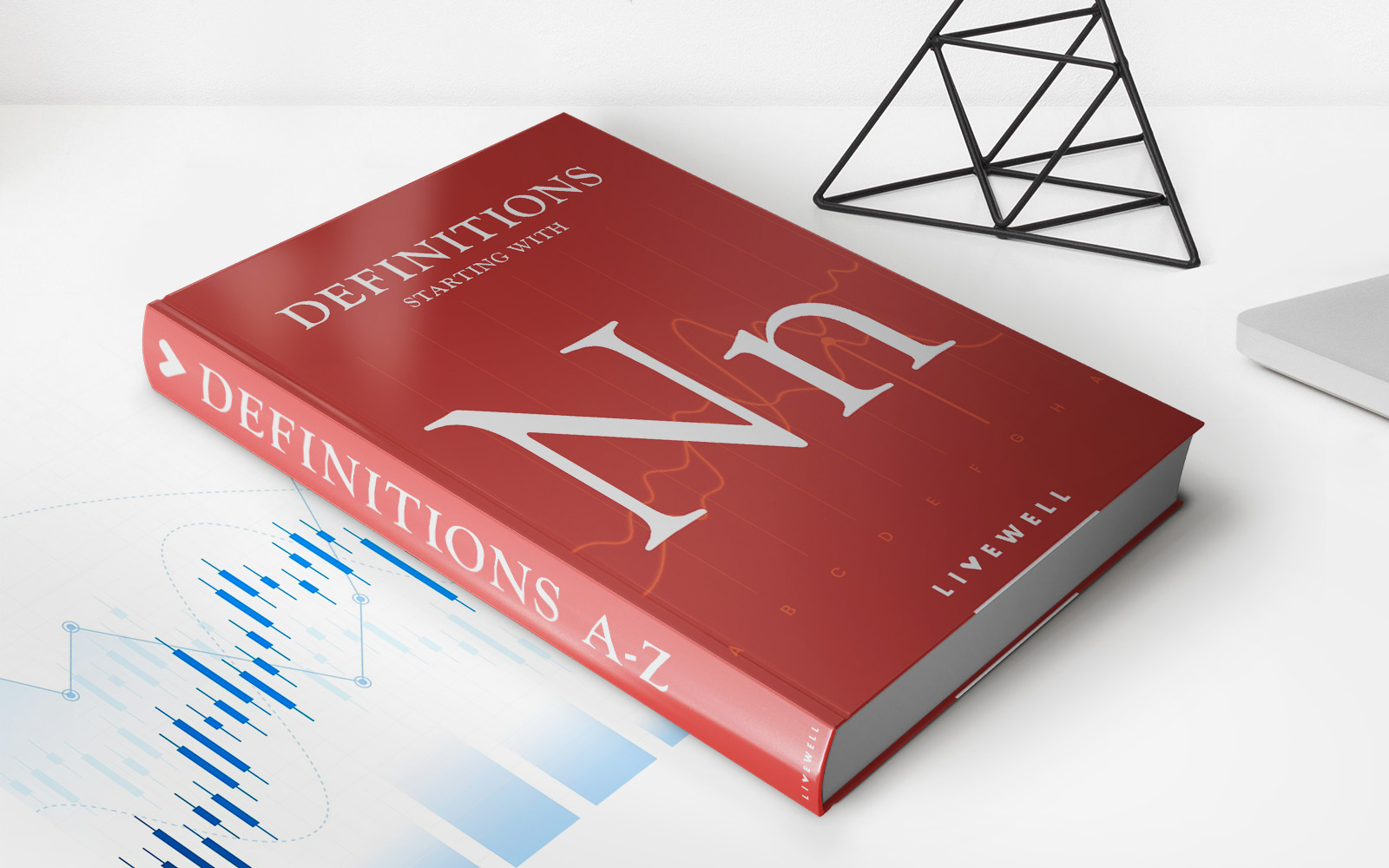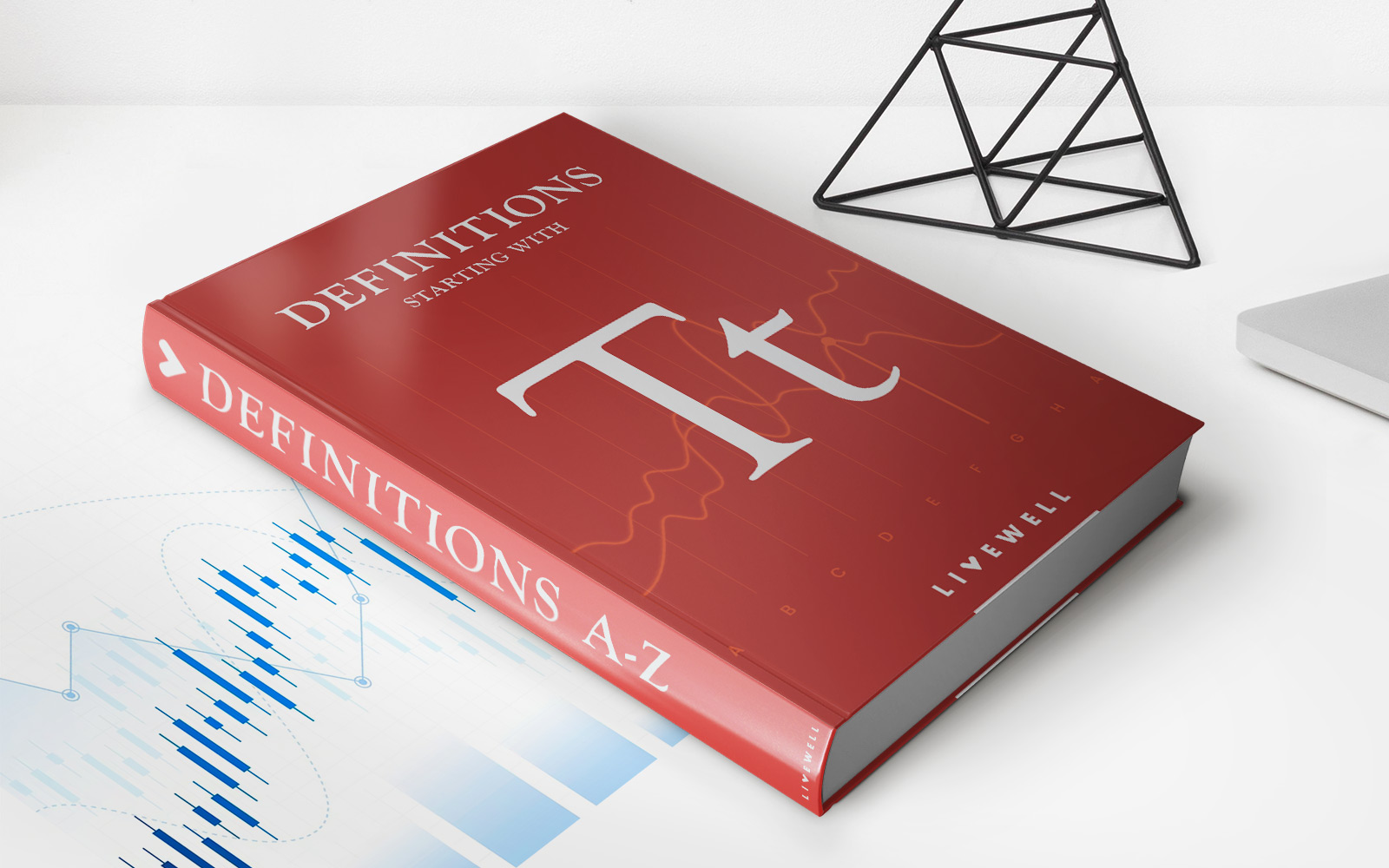Home>Finance>What Do Borrowers Use To Secure A Mortgage Loan?


Finance
What Do Borrowers Use To Secure A Mortgage Loan?
Modified: December 30, 2023
Discover the financial tools borrowers use to secure a mortgage loan. Learn about various finance options available and find the perfect solution for your needs.
(Many of the links in this article redirect to a specific reviewed product. Your purchase of these products through affiliate links helps to generate commission for LiveWell, at no extra cost. Learn more)
Table of Contents
Introduction
When it comes to securing a mortgage loan, borrowers need to fulfill certain requirements and provide specific documents to lenders. These requirements vary depending on the lender and the type of mortgage loan being sought. Understanding what lenders look for when evaluating a borrower’s eligibility can help potential homebuyers prepare and increase their chances of getting approved.
In this article, we will explore the various factors that borrowers need to consider when applying for a mortgage loan. From the down payment to credit scores and income verification, we will delve into the key components that lenders assess to determine a borrower’s ability to repay the loan.
Securing a mortgage loan is a major financial endeavor, and being aware of the necessary requirements can significantly impact the process. By understanding what lenders require, borrowers can proactively prepare their financial situation and increase their chances of obtaining a favorable loan.
Let’s explore the different elements crucial to securing a mortgage loan:
Down Payment
The down payment is a lump sum of money that borrowers need to pay upfront when purchasing a home with a mortgage loan. It is a percentage of the total purchase price and acts as a form of security for the lender. The down payment serves to lower the loan amount, reducing the lender’s risk and ensuring the borrower has a financial stake in the property.
The amount required for a down payment depends on several factors, such as the type of loan and the borrower’s creditworthiness. In traditional mortgage loans, a down payment typically ranges from 5% to 20% of the purchase price. However, there are programs available, such as those offered by the Federal Housing Administration (FHA), that allow borrowers to make a down payment as low as 3.5%.
Having a larger down payment can offer several benefits. Firstly, it reduces the overall loan amount, resulting in a lower monthly mortgage payment. It also enables borrowers to avoid private mortgage insurance (PMI) in most cases. Additionally, a substantial down payment can provide a stronger financial position to lenders, increasing the likelihood of loan approval.
Saving for a down payment can be challenging, especially for first-time homebuyers. However, there are strategies borrowers can employ to accelerate the process. These include setting a budget, reducing unnecessary expenses, and exploring down payment assistance programs that may be available at the local or state level.
It is important to note that the down payment is just one aspect of securing a mortgage loan. Lenders also consider other factors such as credit score, income verification, and debt-to-income ratio. By understanding these requirements and preparing accordingly, borrowers can position themselves for a successful mortgage application.
Credit Score
The credit score is a key factor that lenders use to assess a borrower’s creditworthiness and determine the interest rate on their mortgage loan. It is a numerical representation of an individual’s credit history and reflects their ability to manage debt and make timely payments.
Typically, lenders rely on the FICO credit scoring model, which ranges from 300 to 850. The higher the credit score, the better the borrower’s creditworthiness. A high credit score indicates a lower risk to lenders, making it more likely for them to approve the loan and offer more favorable interest rates.
To qualify for a mortgage loan, borrowers generally need a credit score of at least 620. However, to secure the best interest rates and loan terms, a score of 740 or higher is highly desirable. Borrowers with lower credit scores may still be eligible for a loan, but they might face higher interest rates or additional requirements.
To improve credit scores, borrowers should focus on paying bills on time, keeping credit card balances low, and avoiding new debt. It is important to regularly review credit reports for any errors or discrepancies that could negatively impact the credit score. By addressing these issues early on, borrowers can potentially raise their credit score and enhance their chances of loan approval.
For individuals with limited credit history or a lower credit score, alternative credit scoring models may be an option. These models consider non-traditional forms of credit, such as rent payments, utility bills, and other recurring payments. Some lenders also offer manual underwriting, which takes into account a borrower’s overall financial situation and stability.
Ultimately, a high credit score demonstrates responsible financial habits and increases the likelihood of securing a mortgage loan at favorable terms. Borrowers should strive to maintain a good credit score and take proactive steps to improve their creditworthiness before applying for a mortgage loan.
Employment and Income Verification
When applying for a mortgage loan, lenders require borrowers to provide proof of their employment and income. This information helps lenders assess a borrower’s ability to repay the loan.
Typically, borrowers need to provide documentation such as pay stubs, W-2 forms, and tax returns for the past two years. Self-employed individuals may need to provide additional documentation, such as profit and loss statements or 1099 forms. Lenders verify this information to ensure that borrowers have a stable and reliable source of income.
In addition to verifying employment and income, lenders also consider the length of employment. Stable employment history is viewed favorably by lenders, as it indicates a consistent source of income. Borrowers who have recently changed jobs might face additional scrutiny from lenders, who may require a probationary period or additional documentation to confirm income stability.
For borrowers who haven’t been employed for an extended period or have irregular income, it can be more challenging to secure a mortgage loan. In these cases, lenders may request alternative documents, such as bank statements or proof of other reliable sources of income.
It is essential for borrowers to be prepared to provide accurate and up-to-date employment and income verification. Any discrepancies or inconsistencies may raise red flags and potentially hinder the loan approval process. It is advisable to maintain organized records of pay stubs, tax returns, and other employment-related documents to streamline the verification process.
Overall, lenders verify employment and income to assess a borrower’s ability to repay the mortgage loan. By providing accurate and thorough documentation, borrowers can demonstrate stability and increase their chances of loan approval.
Debt-to-Income Ratio
The debt-to-income (DTI) ratio is an important factor that lenders consider when evaluating a borrower’s eligibility for a mortgage loan. It compares the borrower’s monthly debt payments to their gross monthly income and helps lenders assess their ability to manage additional debt.
Lenders typically prefer a DTI ratio of 43% or lower. This means that borrowers’ total monthly debt payments, including the mortgage payment, should not exceed 43% of their gross monthly income. A lower DTI ratio indicates a lower risk to lenders, as it suggests that borrowers have more financial capacity to handle additional loan obligations.
To calculate the DTI ratio, borrowers need to add up all their monthly debt payments, including credit card payments, student loans, car loans, and any other outstanding debts. They then divide this total by their gross monthly income and multiply it by 100 to get the percentage. For example, if a borrower has $1,500 in monthly debt payments and a gross monthly income of $5,000, their DTI ratio would be 30%.
It is important to note that lenders consider two types of DTI ratios. The front-end ratio only includes the potential housing expenses, such as the mortgage payment, property taxes, and homeowner’s insurance. The back-end ratio takes into account all recurring monthly debts.
Lowering the DTI ratio can improve a borrower’s chances of loan approval. Some strategies to achieve this include paying down existing debts, increasing income through a raise or additional sources, and avoiding taking on new debt before applying for a mortgage loan.
Borrowers should carefully review their finances and calculate their DTI ratio before applying for a mortgage loan. If their ratio is too high, they may need to take steps to reduce their debt or explore alternative loan programs with more flexible DTI requirements.
By keeping their DTI ratio within acceptable limits, borrowers can demonstrate their financial capability to lenders and increase their chances of obtaining a mortgage loan at favorable terms.
Property Appraisal
Property appraisal is a crucial step in the mortgage loan process. Lenders require an independent appraisal of the property to determine its market value and ensure that it serves as adequate collateral for the loan. The appraisal is typically conducted by a professional appraiser who assesses various factors, including location, size, condition, and recent comparable sales in the area.
The purpose of the appraisal is to protect both the borrower and the lender. It ensures that the property is worth the amount being financed and provides an unbiased assessment of its value. If the appraised value comes in lower than the purchase price, it can affect the loan amount and terms, requiring the borrower to make a larger down payment or negotiate a lower purchase price.
Appraisals are important because they help prevent lenders from financing properties that are overpriced or in poor condition. Lenders want to ensure that the property can be sold for an amount that can cover the loan balance in case of default.
Borrowers are typically responsible for the cost of the appraisal, which can range from a few hundred to a few thousand dollars, depending on the size and complexity of the property. The appraisal fee is usually payable upfront or included in the closing costs.
It is essential for borrowers to understand that the appraised value of the property can influence the loan approval process. If the appraisal comes in lower than expected, it may require further negotiations or adjustments to the loan terms. However, if the appraisal value is higher, borrowers may have more favorable financing options.
In addition to the property appraisal, lenders also require a title search to ensure that there are no liens or other legal issues that could affect the property’s ownership. This step is crucial to protect both the borrower and the lender from any potential claims or disputes.
Overall, the property appraisal is an important part of the mortgage loan process. By providing an accurate assessment of the property’s value, it helps ensure that both borrowers and lenders are protected and can proceed with the loan transaction confidently.
Homeowner’s Insurance
Homeowner’s insurance is a critical element in securing a mortgage loan. Lenders require borrowers to have adequate insurance coverage to protect the property and their investment. Homeowner’s insurance provides financial protection in case of damage, loss, or liability related to the property.
This insurance covers various perils such as fire, theft, vandalism, and natural disasters, depending on the policy. It typically includes coverage for the structure of the home, personal belongings, additional living expenses in case of temporary relocation, and liability protection if someone gets injured on the property.
When applying for a mortgage loan, borrowers need to provide proof of homeowner’s insurance. Lenders require this to ensure that the property is protected against potential risks that could affect its value or the borrower’s ability to repay the loan.
The cost of homeowner’s insurance varies depending on factors such as the location, size, and condition of the property, as well as the coverage limits and deductible chosen. It is advisable for borrowers to obtain multiple insurance quotes to find the most suitable coverage at a reasonable price.
Lenders often require borrowers to escrow their homeowner’s insurance payments. This means that the insurance premium is included in the monthly mortgage payment and held in an escrow account. The lender then pays the insurance premium on the borrower’s behalf when it is due.
It is important for borrowers to review their homeowner’s insurance policy periodically and ensure it provides adequate coverage. They should notify their insurance provider of any significant changes to the property or belongings that might affect the coverage.
Having homeowner’s insurance not only satisfies the lender’s requirements but also offers homeowners a sense of security and financial protection. In the event of a disaster or unexpected event, having insurance coverage can help borrowers rebuild and recover without significant financial hardship.
Ultimately, securing homeowner’s insurance is an essential step in the mortgage loan process. By obtaining the appropriate coverage, borrowers protect their investment and fulfill the lender’s requirements, ensuring a smooth and successful loan approval process.
Title Insurance
Title insurance is an integral part of the mortgage loan process that provides protection for both lenders and borrowers. It is a form of insurance that safeguards against any defects or issues with the property’s title.
When purchasing a home, lenders require borrowers to obtain title insurance to ensure that the property’s title is clear and free of any liens, encumbrances, or legal disputes. Title insurance helps protect against any potential claims or losses that could arise due to unforeseen issues with the property’s ownership.
During the mortgage loan process, a title search is conducted to examine the property’s history and verify that the seller has the legal right to sell the property. The title search identifies any existing liens, outstanding judgments, or other claims against the property that need to be addressed before the sale can proceed.
Title insurance protects borrowers and lenders in case any undiscovered issues arise after the purchase is complete. This can include hidden easements, undisclosed heirs with a claim to the property, errors or omissions in previous deeds or public records, or even fraudulent activity related to the title.
There are two types of title insurance policies: lender’s title insurance and owner’s title insurance. The lender’s policy protects the lender’s investment in the property, while the owner’s policy protects the homeowner’s equity. In most cases, borrowers are required to purchase lender’s title insurance, and it is often included in the closing costs.
Owner’s title insurance is optional but highly recommended. It provides coverage for the homeowner’s interest in the property, protecting against potential losses in case of title defects or disputes. It can provide peace of mind and financial protection for homeowners throughout their ownership of the property.
The cost of title insurance varies depending on the property’s value and location. It is a one-time premium paid at the time of closing. The insurance remains in effect as long as the insured party owns the property.
Obtaining title insurance is a crucial step in the mortgage loan process. It provides protection for both lenders and borrowers in case of any unforeseen issues with the property’s title. By ensuring a clear and marketable title, borrowers can have confidence in their investment and navigate the homebuying process with peace of mind.
Mortgage Insurance
Mortgage insurance is a type of insurance that lenders often require borrowers to obtain when their down payment is less than 20% of the purchase price. It serves as protection for the lender in case the borrower defaults on the mortgage loan.
There are two primary types of mortgage insurance: private mortgage insurance (PMI) and government-backed mortgage insurance. PMI is typically required for conventional mortgage loans, while government-backed mortgage insurance is used for Federal Housing Administration (FHA) and U.S. Department of Veterans Affairs (VA) loans.
Mortgage insurance allows borrowers to qualify for a loan with a smaller down payment, as it mitigates the risk for the lender. The cost of mortgage insurance is typically added to the borrower’s monthly mortgage payment.
The premium for mortgage insurance is based on several factors, including the loan-to-value (LTV) ratio, credit score, and loan term. The higher the LTV ratio (the loan amount compared to the property’s appraised value), the higher the premium for mortgage insurance.
Once the borrower’s equity in the property reaches 20% or more, usually through a combination of principal payments and appreciation, they can request the cancellation of private mortgage insurance. For government-backed loans, mortgage insurance is typically required for the life of the loan.
Mortgage insurance offers protection to lenders, but it does not provide any financial benefit to borrowers. It is important for borrowers to consider the cost of mortgage insurance when evaluating their options and consider alternative strategies, such as making a larger down payment or exploring loan programs that do not require mortgage insurance.
Understanding the role of mortgage insurance is essential for borrowers seeking a mortgage loan with a low down payment. By obtaining mortgage insurance, borrowers can meet the lender’s requirements and increase their chances of loan approval, but should also be aware of the additional costs it entails.
Conclusion
Securing a mortgage loan requires borrowers to fulfill specific requirements and provide certain documents. From the down payment to credit scores, employment verification, and debt-to-income ratios, borrowers need to meet these criteria to increase their chances of loan approval. Property appraisal, homeowner’s insurance, title insurance, and mortgage insurance also play vital roles in the mortgage loan process.
Understanding these factors and preparing accordingly can significantly impact the mortgage loan journey. Saving for a down payment, maintaining a good credit score, organizing employment and income documentation, and managing debt responsibly are all key steps for potential homebuyers.
While the mortgage loan process may appear complex, it is essential for borrowers to stay informed and seek professional guidance when necessary. Consulting with lenders, mortgage brokers, and real estate professionals can provide valuable insights and help navigate the mortgage loan process with efficiency and confidence.
By fulfilling the necessary requirements and being prepared, borrowers can position themselves for success in securing a mortgage loan. It is important to remember that each borrower’s situation is unique, and seeking personalized advice is crucial to make informed decisions.
The mortgage loan journey is a significant financial undertaking, but with the right knowledge and preparation, borrowers can achieve their goal of homeownership and build a solid foundation for their financial future.














